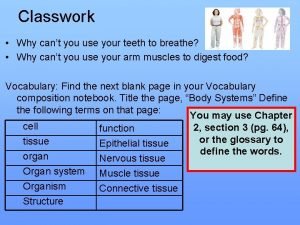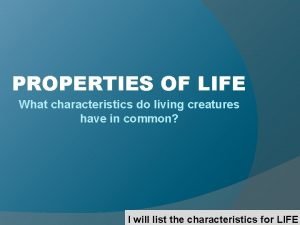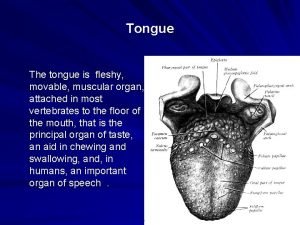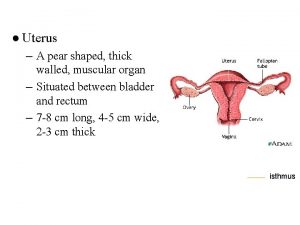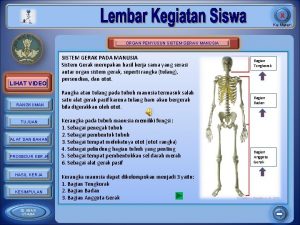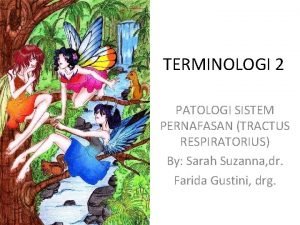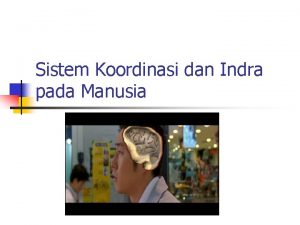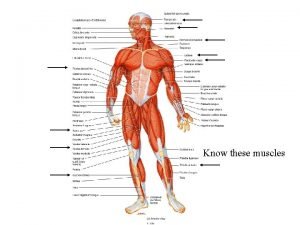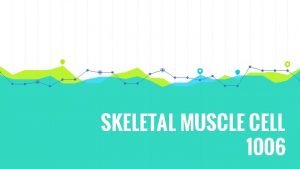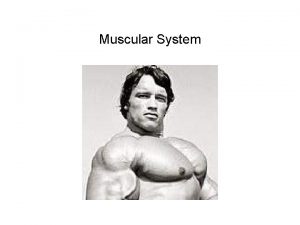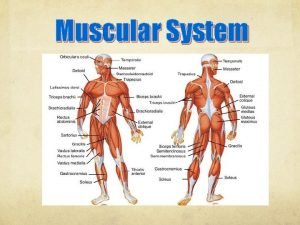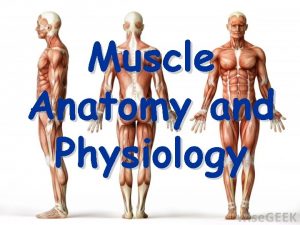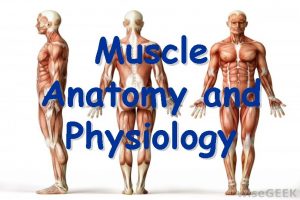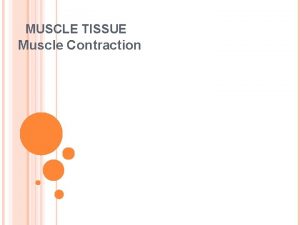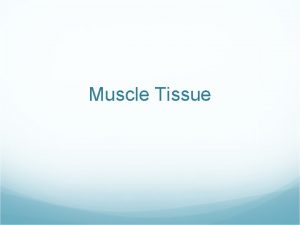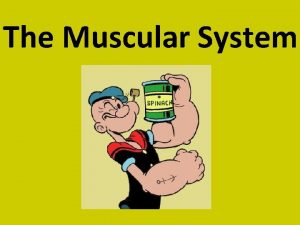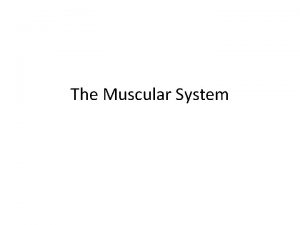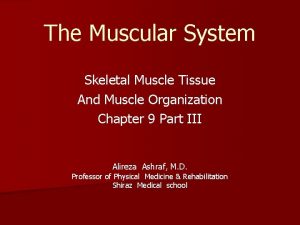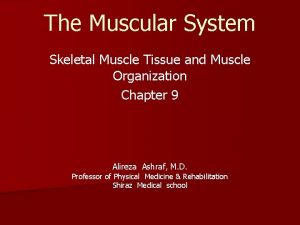MUSCULAR SYSTEM MUSCLE Muscle tissue or organ of














- Slides: 14

MUSCULAR SYSTEM

MUSCLE Muscle, tissue or organ of the human body and animal characterized by their capacity to contract, in general in answer to nervous stimulus. The basic unit of all muscles is the miofibrilla, it contains several hundred of molecules of the protein miosina. The thin filaments contains two chains of the protein actina.


During the muscular contractions, these arrays slip an on another by means of crossed bridges that act like wheels. The energy that requires this movement, it´s provides from mitocondrias that surround the miofibrillas. Three types of muscular fabric exist: flat skeletal heart.

FLAT MUSCLE The visceral or involuntary muscle is made up of cells with spindle form with central nucleus that you / they lack traverse grooves although they show longitudinal weak grooves. The stimulus for the contraction of the flat muscles is mediated by the nervous vegetative system. The flat muscle is located in the skin, internal organs, apparatus sanguine, reproductive, big glasses and excretory apparatus.

SKELETAL MUSCLES This muscle type is compound for long surrounded fibers of cellular membrane: the sarcolema. The skeletal muscles plows innervates starting from the nervous central system, and because this is conscious low control partly, they call themselves voluntary muscles.

Most of the skeletal muscles is together to areas of the skeleton by means of inserts of fabric called conjunctive tendons. The contractions of the skeletal muscle allow the movements of the different bones and cartilages of the skeleton. The skeletal muscles form most of the corporal mass of the vertebrates.

HEART MUSCLE This type of tissue muscular form most of the heart of the vertebrates. they differ mainly of the skeletal muscle in the central position of their nucleus and in the ramification and interconnection of the fibers. .

It lacks heart´s muscle of high rail of controlling volunteer. It is innerved for the nervous vegetative system, although the impels coming from him only increase or they diminish their activity without being responsible for the contraction rhythmic characteristic of the alive myocardium.

The mechanism of the heart contraction is based on the generation and automatic transmission of impels.

FUNTION üIt produces movement üThey generate mechanical energy for the transformation of the chemical energy (biotransformers) üStability to articulate üIt serves as protection üMaintenance of the posture It is the sense of the posture it allow position in the space, thanks to nervous terminations included in the muscular tissue. Contribution of heat, for their abundant irrigation, for the friction and for the energy consumption.

The contraction of the muscular cell is activated by the liberation of calcium of the interior of the cell, in answer probably to the electric changes originated in the cellular surface. The muscles that carry out an appropriate exercise react to the stimuli with power and speed, and it is said that they plows endowed with tone. Ace to result of an excessive uses they dog increase their size (hypertrophy), consequence of the individual increase of each one of the muscular cells.

Ace to result of to lingering inactivity the muscles dog diminish their size (there am / she atrophies) and to weaken. In certain illnesses, ace certain paralysis forms, the atrophy grade dog be such that the muscles plows reduced to part of its normal size.

THANK YOU!!!
 Cell tissue organ organ system organism
Cell tissue organ organ system organism Cells group together to form
Cells group together to form Organ and organ system
Organ and organ system Cell tissue organ system body
Cell tissue organ system body Differentiate muscular strength from muscular endurance
Differentiate muscular strength from muscular endurance Taste buds filiform papillae
Taste buds filiform papillae Muscles cut in episiotomy
Muscles cut in episiotomy Organ penyusun sistem gerak pada manusia
Organ penyusun sistem gerak pada manusia Tractus respiratorius
Tractus respiratorius Organ penyusun sistem indra dan fungsinya
Organ penyusun sistem indra dan fungsinya Function of muscular tissue
Function of muscular tissue Muscular tissue function
Muscular tissue function Muscular tissue
Muscular tissue How is aerolar tissue different than aerenchyma tissue?
How is aerolar tissue different than aerenchyma tissue? Is skeletal muscle an organ
Is skeletal muscle an organ
